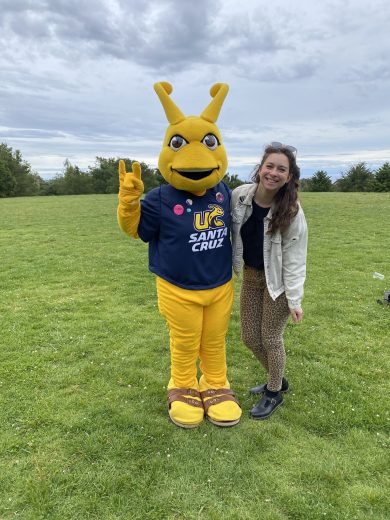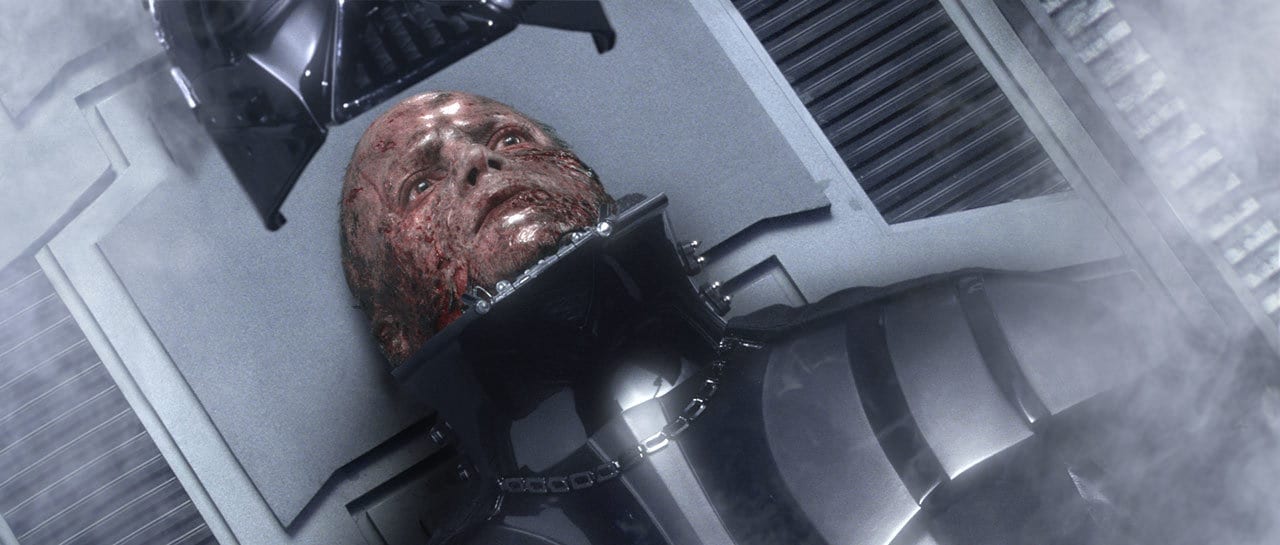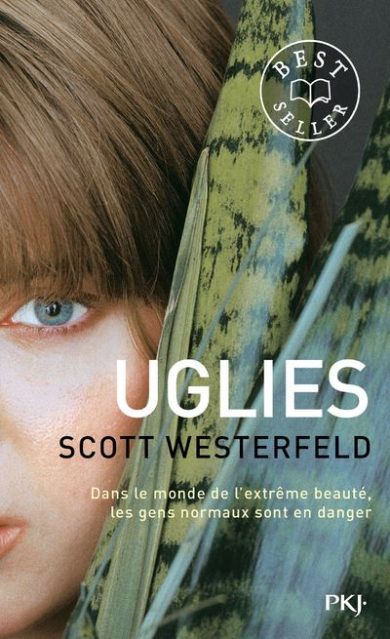Grad Profile: Caitlin Flaws
 Caitlin Flaws is a PhD student in Literature at UC Santa Cruz. Her project concerns disability archives, including ephemera and material objects, and the social construction of disability as an identity category. Her work is interested in how these archives are reflected in speculative fiction and pop cultural media. Flaws served as a Graduate Student Success (GSS) Fellow, was an inaugural Humanizing Technology Fellow in 2022-2023, and is a continuing Humanizing Technology Fellow this year for her course, “HUMN 15–Ethics and Technology.” In November, we discussed Flaws’ research work on disability archives, her approach to collaborative pedagogical design, and her experiences in GSS’s structured peer mentorship program.
Caitlin Flaws is a PhD student in Literature at UC Santa Cruz. Her project concerns disability archives, including ephemera and material objects, and the social construction of disability as an identity category. Her work is interested in how these archives are reflected in speculative fiction and pop cultural media. Flaws served as a Graduate Student Success (GSS) Fellow, was an inaugural Humanizing Technology Fellow in 2022-2023, and is a continuing Humanizing Technology Fellow this year for her course, “HUMN 15–Ethics and Technology.” In November, we discussed Flaws’ research work on disability archives, her approach to collaborative pedagogical design, and her experiences in GSS’s structured peer mentorship program.
Hi Caitlin! Thank you for chatting with us about your ongoing work! To begin, would you provide us with a brief overview of your dissertation project and what you are currently focused on?
No: Thank you for this opportunity to talk about myself and this amazing program.
My dissertation project centers on disability archives: the archives we who are disabled accumulate throughout our lives. This can be anything from the ephemera one accumulates as they are going through the diagnosis process to objects like assistive or adaptive technologies. Currently, I’m focused on delving into the materiality of disability archives and how materiality contributes to the social construction of disability as an identity. Speculative fiction and futurity are in the mix as well, mainly to connect how disability archives are reflected in pieces of speculative fiction/media. An example I love to provide of this is that of Annakin Skywalker/Darth Vader, who after battling Obi Wan Kenobi underwent a disabled transformation. In this transformation, he is essentially placed on a respirator and must use prosthetics. Both devices, while coded as being futuristic in Star Wars, are not that futuristic at all, and are within present-day disabled archives.

You have described your project as “intervening in archival studies through disability” in order to both discern what the disability archive comprises, and also trace “how disability archives create new temporalities and futures for disability.” Could you share more about the importance of including both life works and speculative works in this archive? What is the role of imagination in building new “queer futures” for disability?
Thank you for asking! Is this what QE’s are like? If so, thank you for the practice.
Imagination, and especially the imagination of those who are disabled, can warrant new possibilities and queer futures for those of us whose futures are always shrouded in dystopic dread or as an evil space wizard.
I think both the speculative and the personal (whether that is of the near past or present) are so important, as they are (to me) inherently connected. Especially when it comes to disability. For disability archives, we see our lives, and the materials that make up our lives, reflected in the media we consume. Let’s return to Star Wars, if you will. While it is up for debate whether or not Star Wars counts as science fiction, dystopia, or if it’s just fantasy set in space: there are several depictions of disability that mirror our present and several people’s personal effects. Beyond Darth Vader, there is Luke Skywalker, who is maimed while fighting his father, and loses an arm. Luke is then given a robotic prosthetic arm salvaged from an android. A version of this adaptive technology exists today. While that particular technology is not very accessible (it’s SO expensive), the prosthetic is a widely utilized piece of adaptive technology. In identifying these mirrors, these reflections of the personal and the speculative, we can see how disabled futures are regarded by the present (here I am evoking Alison Kafer’s Imagined Futures). Imagination, and especially the imagination of those who are disabled, can warrant new possibilities and queer futures for those of us whose futures are always shrouded in dystopic dread or as an evil space wizard.
You have used the term “bodymind” to describe the enmeshment and interdependence of body and mind that is at the forefront of a disability studies’ conception of subjectivity. Could you share an example of how this concept appears in one of the texts you’re working with?

I’m so glad you asked. I’ve been working with this YA series called The Uglies by Scott Westerfeld, which depicts a futuristic dystopian society where when a character turns 13 they undergo extreme cosmetic reconstructive surgery to look perfect, aka they turn Pretty. Before one turns Pretty, they are Ugly, and are lesser because of it. Spoiler Alert! It turns out that the Pretty-ification surgery also causes brain lesions, which causes those who become Pretty to be docile and subservient. The main character rebels (begrudgingly) and must deal with the consequences. In this case, not only is disability complicated, but so is the bodymind. If one undergoes becoming Pretty, they compromise their mind for their body, not just for vanity’s sake, but also for social acceptance. Before one becomes Pretty, their body is subject to ridicule, as they haven’t undergone the compromising but perfecting surgery. If one decides to abscond, they lose everything, but their bodymind remains in tact. While in The Uglies there is the overarching narrative of beauty being subjective, and not everything one has to care about, there is also the narrative of what it means to have power. And in this universe, one must sacrifice their mind in order to gain power without knowing that it’s all a farce. And, ultimately, the characters absconding or undergoing Pretty surgery are disabled, whether they know it or not. I first read this series when I was in middle school and it’s been so interesting to revisit it.
Congratulations on being part of the inaugural Humanizing Technology Fellows cohort! You collaboratively designed the course “HUMN 15–Ethics and Technology,” which focused on critiquing technology and the relationship between disability and technological innovation and exploitation. Could you share a bit about your experience participating in the pedagogical design institute. How did you approach the course pedagogically? What questions are you hoping the course might engage with / answer?
Some questions I’m hoping the course will grapple with, in one way or another, are: what are the stakes of technology, and why might it matter that we think critically about where our technology comes from, and who makes it?
Thank you very much 
Pedagogically, I came to the course planning stage of everything with a couple things in mind: the first of which, to use disability justice as a tool to think/write critically about technology, and secondly, to make sure students were engaging with concepts through a myriad of genres, medias, and materials. Some questions I’m hoping the course will grapple with, in one way or another, are: what are the stakes of technology, and why might it matter that we think critically about where our technology comes from, and who makes it?
You are slated to teach “Ethics and Technology” in Summer 2024. What is one reading or assignment that you’re particularly interested in sharing with the students?
Oh my goodness, well, the real answer is all of them, but if I have to narrow it down… So! Okay! The class has daily journal entries, and students have the option to expand one journal entry for their final. One of the journal entries asks students to identify a piece of technology (in my iteration I’m asking them to look at an assistive technology), and reimagine it to be more accessible, dynamic, etc. In this assignment, students are given the opportunity to truly use their imagination with no parameters and apply it to a real-life object. What would it be like if we practiced that more often? To use imagination without the limitations of reality?
You were also a Fellow in THI’s Graduate Student Success Program. What, for you, were the most helpful aspects of this program? Why is it important for incoming graduate students to participate in structured peer mentorship programs like GSS?
Thanks to GSS, I started attending THI PhD+ workshops and learned so much about being a grad student at UCSC.
I got to work with this really lovely mentor named Kirstin Wagner who, thanks to the mentorship side of the program, let me ask her a myriad of silly questions once in a Zoom meeting, which was very impactful for me. GSS is so incredibly helpful if you’re a first generation student, because (at least for me) you know so little but WANT to know so much, it’s hard to figure out how to game the system (or if you even have to). Thanks to GSS, I started attending THI PhD+ workshops and learned so much about being a grad student at UCSC. The peer mentorship aspect takes away ALL the pressure, and really allows you to ask the silly-seeming questions that, actually, aren’t all that silly in the first place. The peer mentorship side of the program really helped me gain the confidence I needed to carve out a space for myself here, and to figure out how I wanted to best use my time while working through my PhD.
Finally, can you share your favorite spot in Santa Cruz?
I love West Cliff so, SO much. It’s the perfect place to walk my dog and stare off into the sunset like I’m Reese Witherspoon in Big Little Lies. Every time I take a long walk, I usually spot an otter or witness a pelican or cormorant dive for food. It is so thrilling. Once I saw a pod of dolphins and started crying, my dog was VERY concerned. I highly recommend grabbing a Yerba Mate from Steamer Lane Supply and just walking.
Banner Image: Man being fitted for a prosthetic arm, via Unsplash.
